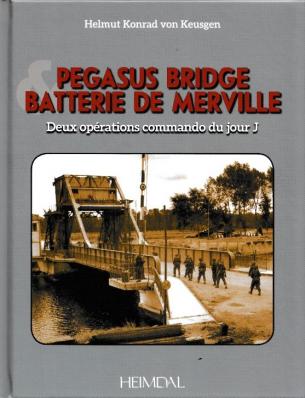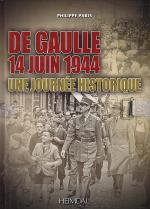Major John Howard's "helping hand party" is arguably one of the most spectacular and famous commando-style operations of D-Day, or even World War II. After a brief and daring glider landing, the tilting steel bridge over the Caen Canal to the sea is captured by a dazzling onslaught of a few dozen airborne soldiers from the 6th Airborne Division. From this moment, twenty minutes after midnight on June 6, 1944, the Bénouville bridge, with its singular silhouette, becomes the "Pegasus Bridge" and enters into history to acquire, in a few decades, a worldwide reputation. Six kilometers away, towards the coast, is a German artillery battery in Merville, which is also attacked a few hours later by British paratroopers ... but what could be the link between these two places - become unavoidable in the memory of the D-Day - between these two events?
In this seventh book in his D-Day series, bestselling author Helmut Konrad von Keusgen presents a brand new, well-founded version of the facts that took place on the Pegasus Bridge and the Merville battery, a version that diverges of all the written works published so far, mainly on the British side. 70 years after the Allied landings in Normandy, and following four decades of patient research, Baron von Keusgen brings these events to life, particularly on the German side, thanks to precise and amazing cross-references that have remained until now in the shadows (for example , those of the Kanonier Hans Staab, serving a Flak at the battery of Merville, or the Obergrenadier Helmut Römer, infantryman on the bridge of Bénouville in the night of June 5 to 6). Enriched with twenty detailed maps and diagrams, as well as more than 270 photos, the author's chosen thread is fascinating from beginning to end, detailing the actions of the airborne forces, then those of the British commandos, on Sword Beach. and in the bridgehead east of Orne and north-east of Caen, on D-Day and in the days that follow.
Leaning this time on an area of ??the D-Day on which he had not yet published, the author arrives at very striking and disturbing conclusions: the airborne operations of the 6th British Airborne have they really all been, as stated so far, of successes dearly paid? This book brings elements of answer that will make date.









